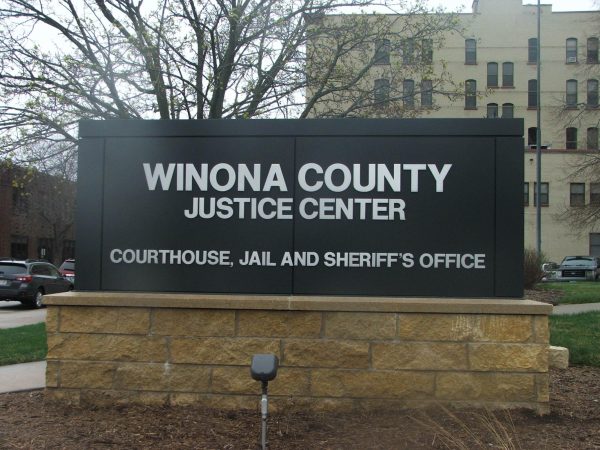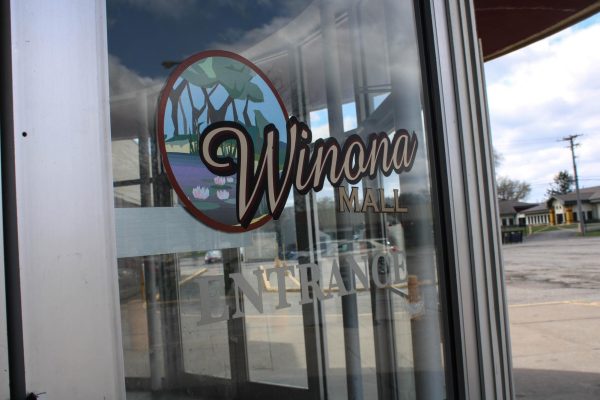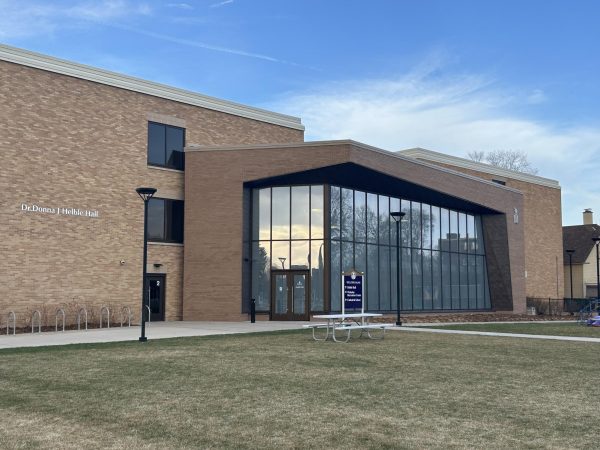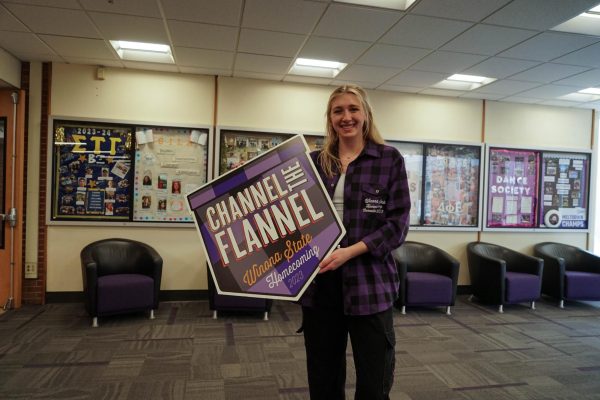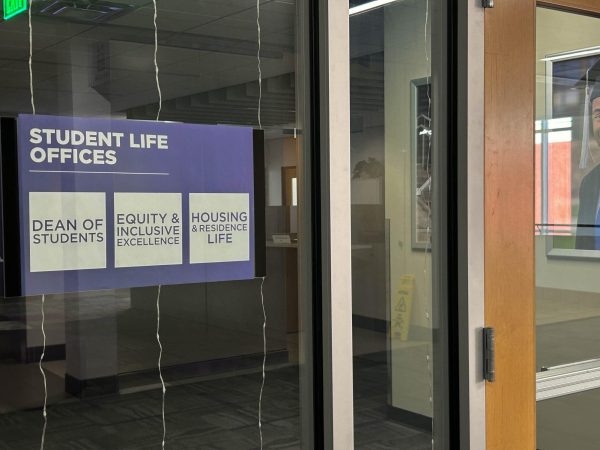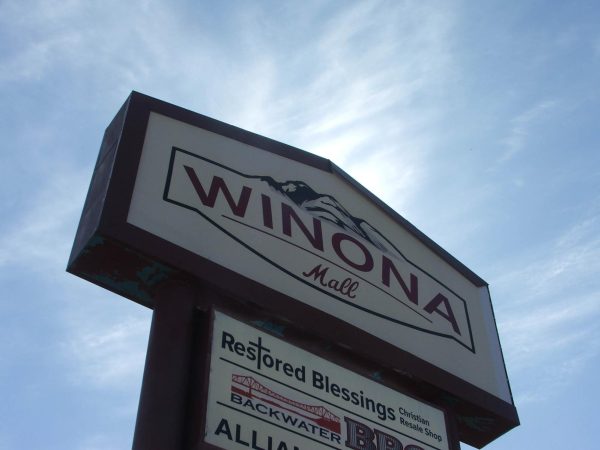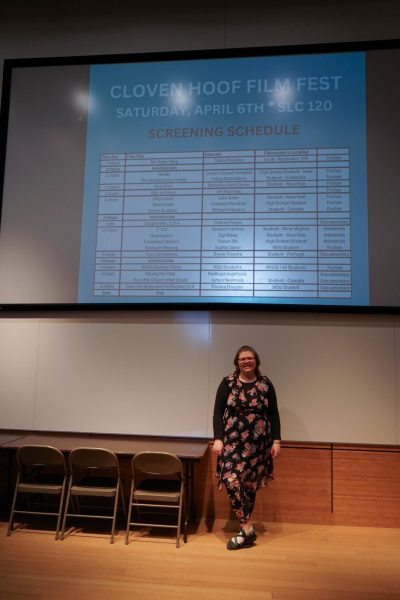WSU celebrates national Drive Electric Week

October 7, 2020
Winona State University celebrated National Drive Electric Week from Sept. 26 through Oct. 4.
National Drive Electric Week is a nationwide event to raise awareness of the benefits of all-electric vehicles.
Winona State partnered with Winona Climate Action Network (CAN) to add two electric vehicle (EV) charging stations on campus.
Winona CAN is a network of community members who aim to bring awareness and positive change to help reduce pollution, battle global warming and engage people in discussions on climate policy.
The two stations were placed in the Kryzsko Commons lot in June.
Nathan Engstrom, Sustainability Director for Winona State, said that Winona CAN approached Winona State about working together.
Engstrom said that Winona CAN applied for and received a Seed grant for $3,030 from Clean Energy Resource Teams (CERT), an organization that works on implementing clean energy projects in Minnesota.
“We’ve been having conversations with them [Winona CAN] and other community partners about EV charging opportunities for over three years,” Engstrom said. “The June installation of the two chargers at Kryzsko was really the culmination of three years of work and collaboration.”
Emilie Falc, co-leader of Winona CAN, said the group reached out to several organizations to see how much interest there was in joining in on fforts to receive the CERT grant.
She said that Winona State responded positively since the addition of EV charging stations lined up well with the school’s own long-term sustainability goals.
Falc said the grant helped pay for the installation of the electric vehicle chargers.
Falc also said she sees a positive future for electric cars, “as long as the current federal government does not derail our efforts to reduce the worse effects of global warming.”
“The future is great for electric cars,” Falc said. “In a few years, previously leased vehicles will be for sale and will be affordable for recent college graduates.”
Engstrom agreed that electric vehicles will rise in popularity in upcoming years since the adoption of electric vehicles “has been rising steadily globally, nationally and locally.”
He said that Winona State decided to add EV stations to campus as a result of increased use of plug-in vehicles by students, faculty and staff and the public.
He also said that there was a strong desire to show leadership both locally and regionally by adding EV charging stations to the area, solidifying the decision to work with Winona CAN.
“More than anything, though, it makes this technology real for people,” Engstrom said. “EVs and EV chargers aren’t just something that exist somewhere else, they’re real and they’re here now.”
Engstrom said that EVs offer advantages over fossil fuel powered, conventional engine vehicles on nearly every front.
He said that upfront costs of EVs are coming down each year and with EV infrastructure building on the rise, they will “become the norm.”
Winona State also has two electric utility carts used daily by the Landscape Services department staff and student workers.
Engstrom said they are both practical and far less disruptive than other options since they are silent when in use and have zero emissions.
Winona State will also be adding electric vehicle options for rental use.
The school is also currently working on several other sustainability initiatives according to Engstrom.
One initiative is an assessment of ways to improve energy and water efficiency across Winona State’s campus under Minnesota’s Guaranteed Energy Savings Program.
Engstrom said that the current plan is expected to be able to implement energy and cost-saving measures on a “large campus-wide scale” by next summer.
He also said the school is creating a request for proposals to find a firm to work with on another initiative, since it will be such a large project.
This plan is “pretty ambitious,” Engstrom said.
“The goal is for the planning process to explore the future of learning and identify an operational model that supports future educational needs and provides the facilities needed to implement it,” Enstrom said.
He said that along with these facility concerns, the school is trying to address equity, health and wellness and financial sustainability at the same time with this plan.
“Overarching all of this is sustainability and resiliency,” Engstrom said. “Making sure WSU… meet[s] the needs of students indefinitely into the future in a dramatically and rapidly changing world.”
Engstrom said that COVID-19 has made it more challenging to connect with students, faculty and staff on sustainability projects occurring on campus.
He has transitioned to working mainly from home this semester.
However, he said these challenges give him and others something important to focus on for the future which helps them “not get to swept up and distracted by this temporary crisis.”
“Now more than ever we need to embrace abundance and focus on making things better for our campus, community and the world every day,” Engstrom said.
The opinions expressed in this paper are not necessarily those of Winona State University, the Minnesota State Colleges and University system, or the Winona State University student body.




























































